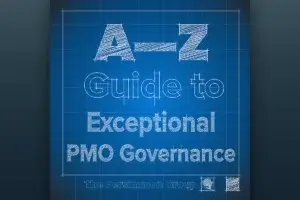In leadership circles, decisiveness is almost universally accepted as a desirable—even indispensable—skill. But how important is it really to leadership success?
Decisiveness is critical in terms of access to leadership roles (and longevity once you get there). Consider this study in which 63% of people likely to be promoted in the near term scored very high on the “decisiveness index.”
But when it comes to true leadership, it’s worth considering whether decisiveness comes with a dark side. Conversely, it may be useful to challenge the assumption that less decisive people are poorer leaders.
Particularly in the context of a leadership team, it is vital to have (at least) one moderating influence that encourages the group to prioritize strategic decisions over rapid ones.
In the absence of this counterbalance, you can use these basic questions to guide your decision-making conversation.
1. When is the last responsible moment to make this decision?
When you decide too early, you risk making your decision based on incomplete information and poorly thought-out assumptions. On the other hand, waiting too long carries a cost too. To find the right balance, it can be helpful to agree on the “last responsible moment” to make a final decision, even if you’re pretty sure you know what you want to do.
Use the extra time to scan the environment for more data points (or challenge the ones you already have). Consider your decision’s long-term or hidden consequences and how you will mitigate those risks. Even a delay of 24 hours can radically improve the quality of your decision.
2. What does the “undo button” look like?
In other words, if new information becomes available that changes our assumptions, what options do we have to unwind or modify our decision? This is a crucial question to ask in rapidly evolving, uncertain situations.
Effective leadership is also humble—it requires accepting that a percentage of your decisions will turn out to be wrong—not because your decision-making was poor, but because the future is fundamentally unpredictable. (This was especially true for leaders in the early days of the pandemic when information was scarce and poorly understood.)
For high-stakes decisions with no undo button, it’s important to take more time (if you have it) to consider the long-term implications of the decision financially, operationally, culturally, and ethically.
3. What do you think now—and what would change your mind?
Groupthink is real…and it’s dangerous. To counteract the tendency to come to a consensus too early, it can be helpful to take a poll of the room as soon as the facts of the case are laid out. Go around the room (most senior leader last) and ask, “If you were making the decision alone, which way would you lean?” Follow that with “What additional data might cause you to change your mind?”
This helps to identify, understand, and engage with a diversity of opinions—while asking everyone in the group to hold their opinion with “a loose hand,” open to data or insights that could invalidate their position.
Bottom line—good decision-making is timely but not always rapid. Strong leadership teams need intuitive “go with your gut” decision-makers and “ponderers” who engage with decisions more deliberately. You can encourage both to thrive by shifting your decision-making culture from ASAP to ASAR (as soon as responsible.)










